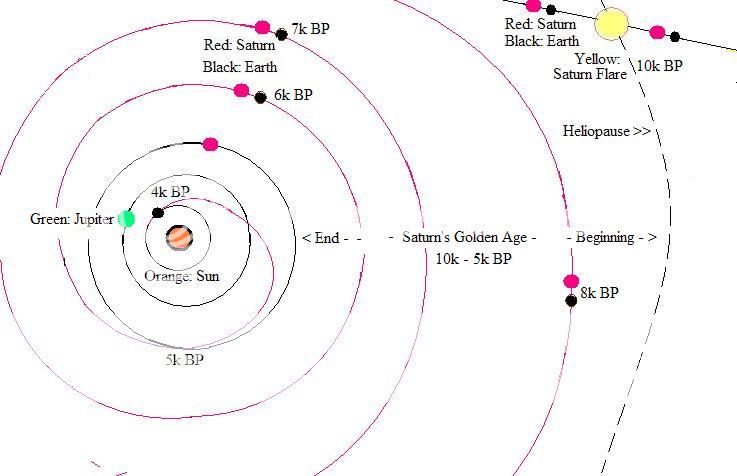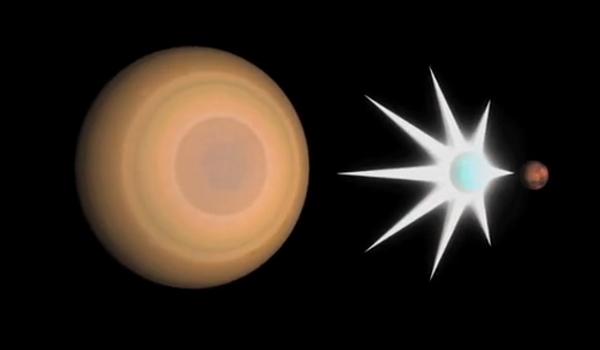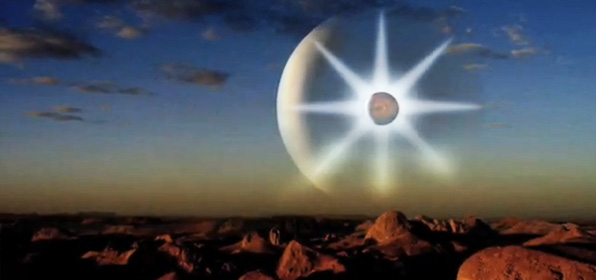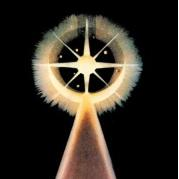Here's an illustration of Saturn's journey into the solar system.

This starts with Saturn (with Earth trailing behind it) entering the heliosphere at upper right after bouncing off of it a few times 10,000 years ago (10k BP), then it spirals in toward the Sun for 5,000 years, moving toward the left. At 5k BP Earth separated from Saturn (after Venus and Mars did so) and spiraled in to its present orbit.
Here is my summary of the Saturn theory, mostly from Cardona, some from Cook, Talbott and Gilligan. The theory started with common mythic elements and each element is supported by scientific theory.
Each statement starts with M) for Mythic element or s_ for scientific interpretation of prior mythic element.- Charles, or anyone, if you find any of these scientific interpretations improbable, please state what would more likely explain the mythic element.


 M) The Venus comet formed a ring around Saturn
M) The Venus comet formed a ring around Saturns_leaving a trail of dust as it circled around the polar axis
M) Venus looked like a snake biting its own tail in a ring shape (Ouroboros)
M) The planets were at wars_They had close encounters with each other
s_Humans began to imitate the planets by warring among themselves
M) The stick man may have appeared here, instead of 5,000 years earlier
M) Saturn left its polar throne in the sky and shrank in sizes_That was after it encountered Jupiter or something about 5k BP
s_It was actually Earth that left Saturn
s_This may be when the ice age began as Earth left the orbit of Saturn and spiraled in to its present orbit
M) Earth's Moon came into view for the first times_It was a former moon of Saturn or another planet not then visible
M) The stars then first appeared in the skys_It was because Earth was then free of Saturn's plasmasphere
M) Jupiter may then have occupied Saturn's throne for a time
s_That's if Earth began to follow behind Jupiter
s_Saturn may have bounced off of Jupiter (if it could bounce off of the heliosphere)
M) The sky became filled with meteors and dust
s_The debris came from close encounters among some planetoids
M) The meteors looked like herds of animals running around the sky (Cook)
s_Cave painters were familiar with herds seen at a distance
M) The Sun, planets and stars became partly obscured by orbiting dust (Gilligan)
s_Egyptians drew the Sun and planets as red balls (Gilligan)
s_Earth was often struck by meteors for about 3,000 years (Gilligan)
M) Human consciousness changed from robotic to self-directed (Julian Jaynes)
s_The skies gradually cleared about 2,000 years ago (Gilligan)
Flaring, But No Bouncing
Postby CharlesChandler » Wed Feb 27, 2013 2:28 pm
-LK: I'd like to know if it might be possible for a brown dwarf star to bounce off the heliosphere a few times before maybe adjusting charge potential to be able to penetrate it.
-CC: I think that a star impinging on the heliosphere would simply push the heliosphere out of the way. There might be a potential between them. But a large, condensed object such as a star has a lot of momentum, while the extremely tenuous heliosphere has none of that. In cases where asteroids or meteoroids have bounced off of larger bodies such as the Sun or the Earth, the deflection was extremely slight, and only occurred when the impinging object got into the densest part of the atmosphere.
-LK: Cardona says brown dwarfs are known to flare brightly, so I'd like to know how they do so. I'd like to know if Alfven's plasma cells may exist in space where electric potential changes considerably. Cardona supposes that the change in potential [between plasma cells] is what triggered flaring on Saturn in its journey from the Saj Dwarf galaxy to the solar system.
-CC: Plasma cells can occur anywhere, if there has been a charge separation, and if there is some sort of resistance to charge recombination. Then the opposite charges organize themselves into double-layers. With equal quantities of both charges, all of the electric field is between the double-layers. So plasma cells are said to "insulate" themselves from their environments.... But it isn't really "insulation" — it's just that they aren't showing much of an E-field to the outside world, so they don't behave as charged objects with respect to their environments, even though there might be substantial potentials inside the cell. ... An object penetrating a plasma cell will very definitely encounter differences in potential, and could flare as a result.
Waves Instead of Bounces
- Do you agree that the heliosphere is a plasma cell? If so, then I guess you'd agree that Saturn as a brown dwarf encountering the heliosphere for the first time would or could have flared on contact. Right?
- Cardona thinks Saturn flared several times when it entered the heliosphere about 10k BP. Since the heliosphere is probably way too low density to cause a brown dwarf etc to skip or bounce on it a few times, as you say, is it possible that the heliosphere surface could have been wavy enough for Saturn to have penetrated several waves while entering at a low angle to the heliosphere surface? And could the electric charge difference between Saturn and the heliosphere surface have triggered flares on Saturn each time it penetrated a wave?
Plasma Cells in Space
- Am I right that you've said that interstellar and interplanetary media are positive charged, while planetoids and stars are negative? If so, did you also say it's because of photoionization? Or would it be by the process that Bridgman mentioned, in which electrons are able to move much faster and farther than positive ions, so they naturally tend to separate in a gaseous environment? And then those separated electrons tend to attract to planetoids and stars initially by gravity and by the "like^3" principle?
- If all that is right, is that likely how plasma cells form in space? And how do the plasmasphere surfaces of plasma cells form? Would they form only from stellar and planetary winds, like the solar wind? Would the plasmasphere surfaces be electric double layers with positive inside and negative outside? Would the layers be stationary, or would they tend to flow in opposite directions as in electric filaments? Would the plasma cell surfaces tend to form filaments, or sheets? If sheets, could the sheets develop waves, such as from the approach of large objects and would such waves accelerate outward?















